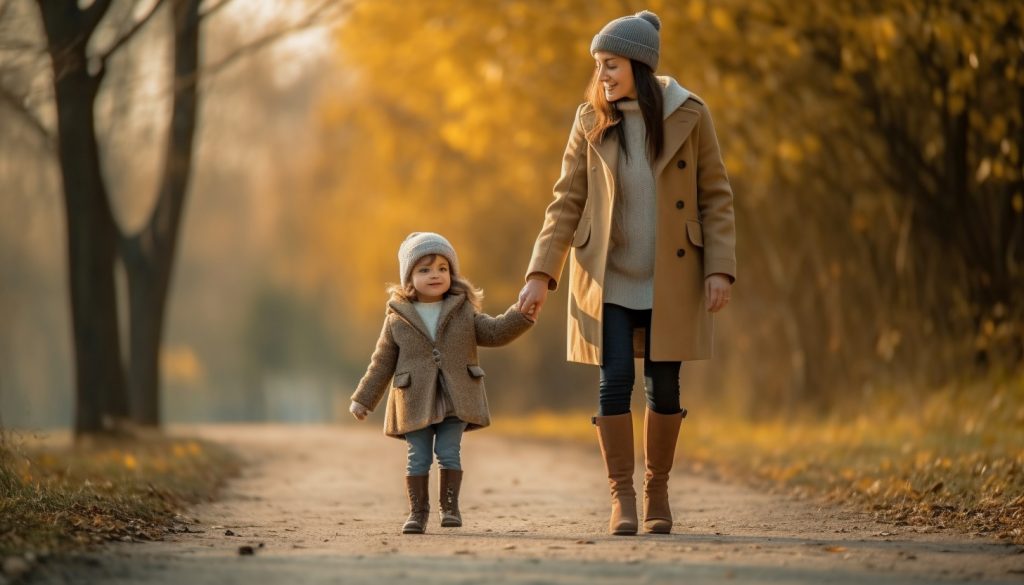Every interaction you have with your child is a form of communication. It’s not just about the words you say: The tone of your voice, the look in your eyes, and the hugs and kisses you give – all convey messages to your child. The way you communicate with your child not only teaches them how to communicate with others, it shapes their emotional development and how they build relationships later in life.
Key Takeaways:
- Communication with your child goes beyond words and includes nonverbal cues.
- Active listening and reflective listening help foster effective communication.
- Speaking clearly and using kind language are important for effective communication.
- Good communication with babies and children builds strong relationships.
- Effective communication plays a crucial role in child development.
Types of Communication and Tips for Verbal and Nonverbal Communication
Communication plays a vital role in our everyday interactions with others, including our children. It can be broadly categorized into two forms: verbal and nonverbal communication.
Verbal Communication
In verbal communication, the words we say, the tone of our voice, and the language we use all play a crucial role in conveying our message effectively to our children. Here are some tips to improve your verbal communication skills:
- Speak clearly and use words that your child can easily understand.
- Pay attention to your pitch and tone of voice to create a positive and nurturing atmosphere.
- Avoid using bribes or rewards to manipulate your child’s behavior, as this can hinder open and honest communication.
- Encourage your child to express their feelings and thoughts, and explain your own feelings as well.
- Use ‘noticing’ statements to acknowledge and validate your child’s emotions.
Nonverbal Communication
Nonverbal communication involves gestures, facial expressions, body language, and physical touch. These cues can greatly enhance the effectiveness of your communication with your child. Here are some tips for improving nonverbal communication:
- Make eye contact with your child to show that you are fully present and engaged in the conversation.
- Use appropriate hand gestures and facial expressions to convey your message more clearly.
- Respect your child’s personal space and avoid invading it.
- Physical touch, such as hugs and gentle pats on the back, can help convey love and support.
Active listening is an essential component of effective communication. It involves giving your full attention to your child, using affirming nods and encouraging smiles to let them know that they are being heard and understood. Reflective listening, on the other hand, involves paraphrasing and repeating back what your child has said using different words. This technique helps demonstrate that you are actively engaged in the conversation and encourages your child to delve deeper into their thoughts and feelings.
By speaking clearly, avoiding bribes, explaining feelings, using ‘noticing’ statements, and practicing active and reflective listening, you can create a positive communication environment with your child, fostering a deeper understanding and strengthening the parent-child relationship.
Importance of Communication with Babies and Children
Warm, gentle, and responsive communication is crucial for babies and children’s development. It not only helps them feel safe and secure but also builds strong relationships with their parents or caregivers. Good communication involves various elements that contribute to effective interaction and understanding between adults and children.
First and foremost, giving full attention to children is essential. By being present in the moment, we show them that their thoughts and feelings are valued. Encouraging children to express themselves freely and openly is another crucial aspect of communication. We should create a safe space where they can share their thoughts and emotions without any fear of judgment.
Active listening is a fundamental skill in building good communication with children. By actively listening, we can learn more about their lives, interests, and concerns. It also helps us understand their perspectives, fostering empathy and deeper connections with them.
When communicating with babies and children, it’s important to focus not only on the words spoken but also on body language and tone of voice. Nonverbal cues play a significant role in conveying emotions and messages. By being mindful of our own body language and tone, we can promote positive communication and emotional well-being.
Involving children in conversations and decision-making processes is empowering for them. It helps them develop a sense of autonomy and boosts their confidence. By encouraging their participation, we show them that their opinions and input matter, fostering mutual respect and trust.
Building good communication skills with children starts from birth, where simple ‘conversations’ with newborns form the basis of early communication development. Gradually, as babies babble and respond, we can facilitate their language acquisition and linguistic skills.
Encouraging children to listen is equally important in building effective communication. We can be their role models by actively listening to them, valuing their words, and responding thoughtfully. It’s crucial to let them finish speaking before responding, using language they can understand, and giving simple and clear instructions.
The Impact of Communication on Child Development
Effective communication plays a crucial role in the overall development of children. By developing strong communication skills, children are better able to express their thoughts and emotions, build relationships, and navigate social interactions.
One key aspect of communication is the development of emotional intelligence. Good communication helps children understand and manage their own feelings, as well as empathize with others. This enables them to develop stronger emotional resilience and establish healthier relationships.
Furthermore, communication also contributes to cognitive development. Through meaningful conversations, children learn language, expand their vocabulary, and develop reasoning skills. These cognitive abilities are essential for their academic success and overall cognitive growth.
Language development, in particular, is significantly influenced by communication. Engaging in daily conversations with children helps them expand their vocabulary, understand sentence structures, and improve their language fluency. This lays a solid foundation for their future academic achievements.
Additionally, effective communication nurtures social skills in children. By encouraging open and respectful dialogue, children learn how to listen attentively, take turns in conversation, and understand social cues. These social skills are crucial for building positive relationships with peers, teachers, and other individuals they encounter in their daily lives.
Enhancing child communication is a responsibility that parents play a vital role in. By providing a nurturing communication environment and serving as positive role models, parents can help their children develop strong communication skills, emotional intelligence, social skills, and cognitive abilities. These skills and abilities form the basis for a child’s holistic growth and success in various aspects of life.
Impact of Communication on Child Development
| Development Area | Impact of Communication |
|---|---|
| Emotional Intelligence | Helps children understand and manage their own feelings and empathize with others. |
| Cognitive Development | Promotes language development, vocabulary expansion, and reasoning skills. |
| Language Development | Improves vocabulary, sentence structure, and language fluency. |
| Social Skills | Develops active listening, turn-taking, and understanding of social cues. |
Conclusion
Effective communication with your child is crucial for fostering meaningful conversations, enhancing their communication skills, and building strong relationships. It is not just about the words we say, but also involves nonverbal cues, active listening, reflective listening, and using clear and kind language.
By prioritizing communication with your child from an early age and throughout their development, you provide them with the tools and strategies needed to navigate the complexities of interpersonal relationships. It is through these conversations that children learn to express their thoughts and emotions, understand others, and develop empathy.
Investing in communication with your child encourages their emotional well-being and aids in their overall growth. It promotes the development of important skills such as effective listening, articulating thoughts, and understanding body language. Cultivating these communication skills early on not only benefits their current relationships but also sets them up for success in the future.
In conclusion, by employing child communication strategies, fostering meaningful conversations, and enhancing communication skills, we can create a strong foundation for our children’s social and emotional development. Building open lines of communication with our children allows them to feel seen, heard, and supported, fostering the growth of healthy and meaningful relationships in their lives.
FAQ
What forms of communication are important when talking to my child?
Communication can take two forms: verbal and nonverbal. Verbal communication includes pitch and tone of voice, the words you say, dialect, and using words your child can best understand. Nonverbal communication includes facial expressions, eye contact, personal space, hand gestures, and physical touch.
How can I actively listen to my child?
Active listening involves using gestures such as encouraging smiles and affirming nods. Reflective listening involves repeating back what your child says using different words. Speaking clearly and using kind language also play a role in effective communication. Avoiding bribes and explaining feelings can help your child develop emotional intelligence. Using ‘noticing’ statements and having fun together can strengthen the parent-child relationship. Focusing on behavior instead of personal attacks and leading by example are also important in fostering effective communication with your child.
How does communication with babies and children contribute to their development?
Warm, gentle, and responsive communication helps babies and children feel safe and secure. It also builds and strengthens relationships between children and their parents or caregivers. Good communication involves giving full attention, encouraging children to express their thoughts and feelings, listening and responding sensitively, focusing on body language and tone, and involving children in conversations. Developing good communication from birth involves having ‘conversations’ with newborns and gradually encouraging babbling and response. Active listening is key to good communication and helps parents learn and understand more about their child’s life. Encouraging children to listen involves being a good role model, letting them finish talking before responding, using language they understand, and giving simple and clear instructions.
How does communication impact child development?
Effective communication plays a crucial role in child development. Communication skills help children express their thoughts and emotions, build relationships, and navigate social interactions. Good communication fosters emotional intelligence, allowing children to understand and manage their own feelings as well as empathize with others. Communication also contributes to cognitive development as children learn language, vocabulary, and reasoning skills through meaningful conversations. By enhancing child communication, parents help set a strong foundation for their child’s overall development.
How can I improve communication with my child?
Effective communication with your child is key to fostering meaningful conversations, enhancing communication skills, and building strong relationships. It involves both verbal and nonverbal communication, active listening, reflective listening, and using clear and kind language. By prioritizing communication with your child from an early age and throughout their development, you are setting them up for success in their relationships, emotional well-being, and overall growth.



